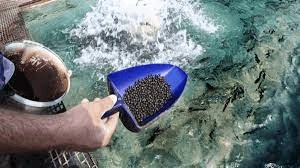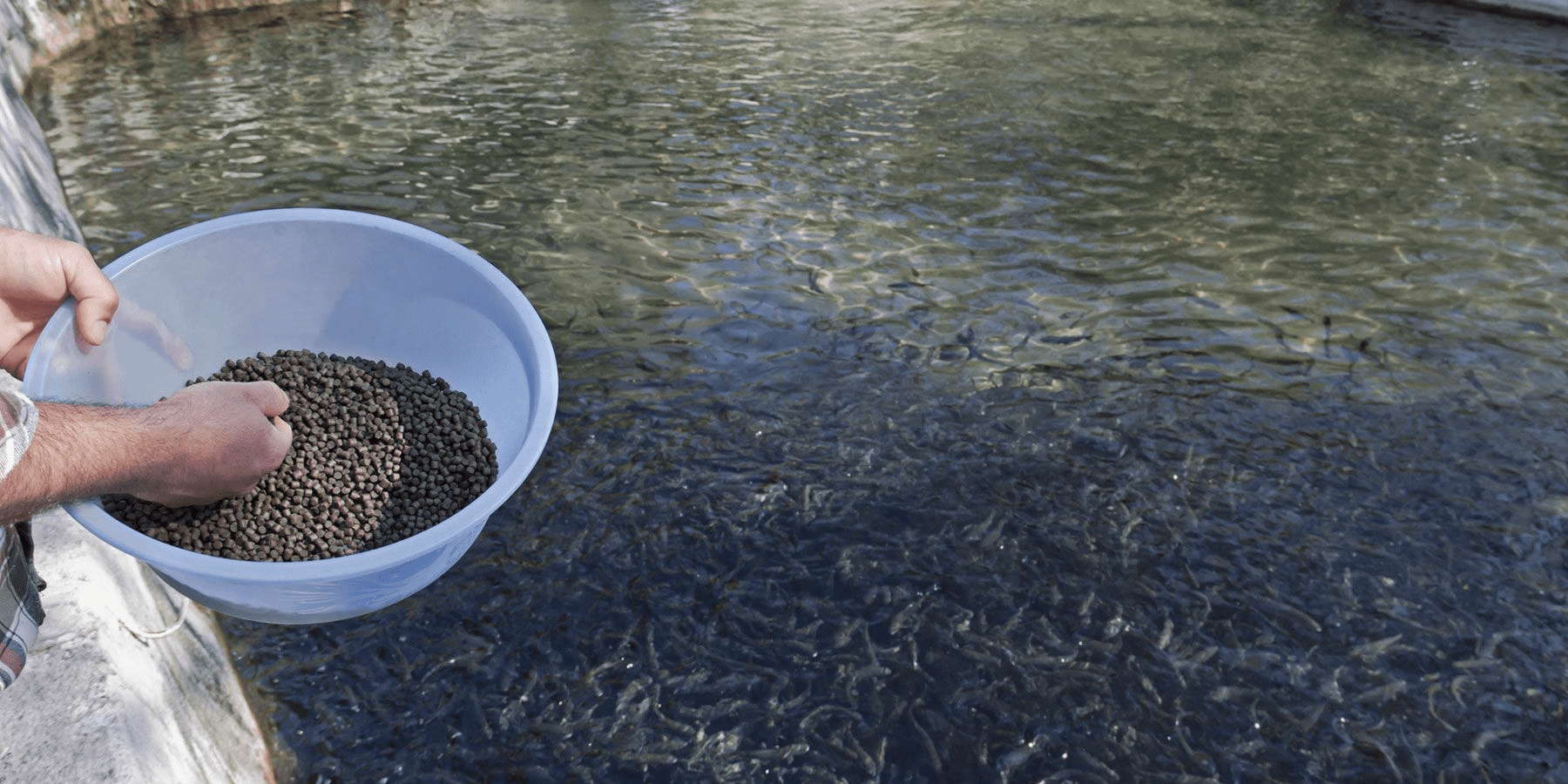To a large extent, and for imported fish feeds, the expiry date will determine this since the feeds are well packaged however, once the feeds bags are opened and also for local feeds, I will not recommend keeping the feeds for more than 2weeks.
The essence of not keeping the feeds for long is to prevent contamination which may be deadly for the fish. The place where the feeds are kept must be dry and free of rodents that may consume the feeds and also be a disease agent.
How Much Fish Feeds and How Often Should You Feed Fish?
Overfeeding is the most common mistake new fish owners make. When you give fish too much food, the remnants can clog your filter and break down into toxins that are harmful to fish. Hence the warnings on fish food packages not to overfeed the fish.
Understand How Fish Eat
In nature, fish eat whenever they are hungry and the food is available. If food sources are plentiful, they will eat several times a day. On the other hand, if food sources are scarce, they might go for days between meals. For this reason, fish are very opportunistic and will eat whenever they have a chance.
That means that if you offer them food, they will usually gobble it up, even if they aren’t starving. Keep that in mind the next time your fish beg for food. Fish quickly learn who brings the food to the tank and will jump at the chance to be fed, even if they are not in dire need of food.
Number of Feedings per Day
How often you need to feed your fish depends on the kind of fish you have. In general, most fish do quite well on one feeding per day. However, some owners prefer to feed their fish twice a day. Young, growing fish might need to eat three or more times per day. Regardless of the quantity of feedings, the key is to keep each feeding very small.
Most fish will do well with two meals a day. The timing is not critical, with the exception of nocturnal feeders. If you have nocturnal fish in your tank, such as certain catfish, be sure to feed them just before turning the lights out at night. They will hunt for the food in the dark, using their keen sense of smell to find it.
There are some exceptions to the once-per-day feeding rule. Herbivores (vegetarian fish) like Silver Dollars, Mollies, and Farowellas need to eat frequently because they have smaller stomachs that cannot hold a lot of food. In nature, they would graze all day on plants.
They should be given several small feedings a day or be provided with live plants they can nibble on. Goldfish do not have a stomach at all, so shouldn’t be fed a large meal all at one time.
They naturally nibble on algae and other food items throughout the day, so it is better to feed them several small meals during the day rather than giving them a big meal only once a day.
Newly hatched fry and young fish who are not fully grown require more frequent feedings of special foods designed for fry.
Read Also: How often is recommended to give maggots to the fishes
Determining the Right Amount of Fish Food

A good rule of thumb is to give your fish no more food than they will consume in less than five minutes. When in doubt, underfeed. You can always give them another small feeding if necessary.
Also, keep in mind that the type of food is just as important as the amount. You want to ensure your fish are getting the proper nutrition they need to stay healthy. Also, if you have a community of fish, you’ll need to consider every species’ dietary needs and find food to balance that out.
What Happens If You Overfeed Fish?
The term overfeeding means feeding more food than your fish needs or wants to eat in one feeding. Even hobbyists who only feed once a day or every other day can be guilty of overfeeding if the food is not completely consumed in less than 2 or 3 minutes.
If you overfeed your fish, the effects may not be apparent at first. It’s a myth that fish will explode from eating too much, so you don’t have to worry about that. However, there are other health concerns associated with overfeeding.
It is possible for some fish species to develop a fatty liver disease (hepatic lipidosis). Overfeeding can also stress the fish and the negative effects on the aquatic environment itself will affect the health of your fish.
Uneaten food will produce by-products (ammonia, nitrite, and nitrate) that can be harmful to fish. In the event that you do overfeed, promptly remove the uneaten food using a siphon or net. If you do not remove the excess food, you risk affecting the chemistry of the aquarium water.
Nitrite and ammonia levels can rise and the oxygen and pH can drop to life-threatening levels. The by-products can also cloud the water, promote an algae bloom, or encourage mold or planaria to grow out of control.
Here are some tell-tale signs of overfeeding:
– Uneaten food remains in the aquarium after 5 minutes, but the fish show no interest in it. In extreme cases, a fuzzy or cottony white fungus may begin to grow on the bottom or on decorations and plants.
– Aquarium water is cloudy or hazy and has a foul odor to it. Foam or froth may be present on the surface.
– Filter media becomes clogged in a matter of days after cleaning.
– Excessive algae growth. Even with proper filtration and water changes, nitrate and phosphate accumulation from heavy feeding can contribute to excessive algae growth.
– Ammonia or nitrite levels are elevated.
– Chronically high nitrates or low pH.
When Should I Feed My Fish?
In nature, most fish feed in the early morning and at dusk. Exceptions are herbivores and omnivores that forage throughout the day, and nocturnal species. Although aquarium fish can be fed at any time of day, morning and evening feedings are best.
They quickly learn when feeding time is, eagerly swimming back and forth at the surface or emerging from hiding places in anticipation of their next meal.
Make sure the aquarium light has been on for at least 30 minutes before the morning feeding and leave it on for at least 30 minutes after the evening feeding.
Nocturnal species such as knifefish, catfish and certain plecostomus can be fed sinking foods shortly after the aquarium light is turned off at night. Providing your fish with the right diet and feeding schedule will ensure growth, disease resistance, vibrant colors, and long, healthy lives.
Read Also: The Best Position for your Fish Pond Water Inlet Pipe
Read Also: How to Grow Tomatoes in Containers






